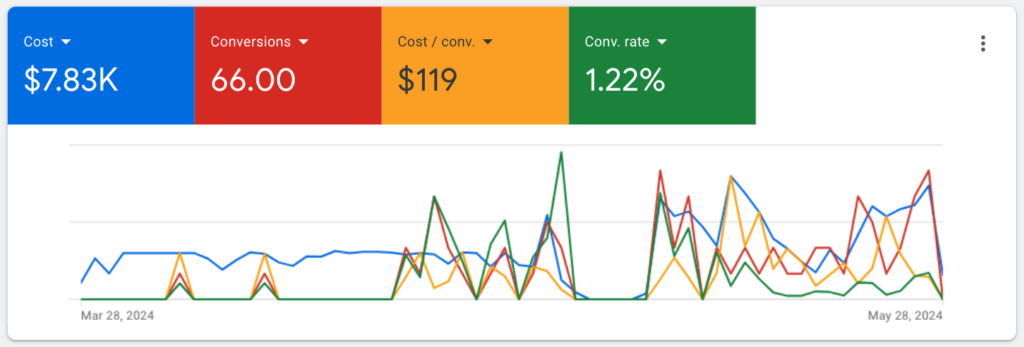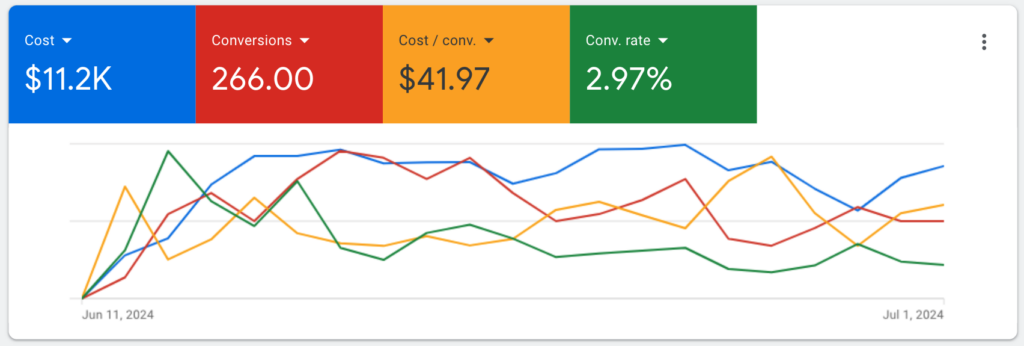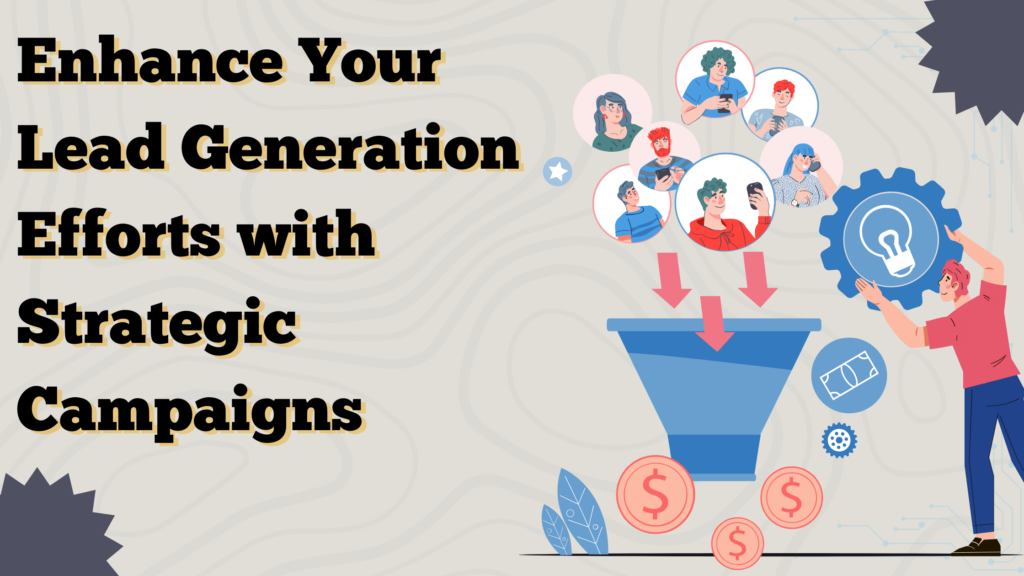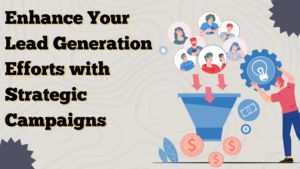Enhance Your Lead Generation Success Through Strategic Use of Google Ads Campaigns
Business Model: Recruitment Company
Time Frame: Less Than 6 Months
Overview
This case study explores the transformative impact of a strategic overhaul on a recruitment business’s lead generation efforts. The client approached us with concerns over high costs per lead and a disappointing lead volume despite significant investments in paid advertising. Our objective was to identify and retain the beneficial elements of their existing campaigns while optimizing the overall structure to enhance efficiency and performance. Through a detailed audit, targeted keyword segmentation, refined ad placements, and customized ad copy, we achieved remarkable improvements in their lead generation metrics.
Challenge
- High Cost Per Lead: The client was experiencing unsustainable costs for each lead generated, negatively impacting their return on investment.
- Low Lead Volume: Despite spending on paid advertising, the volume of leads was not meeting expectations, limiting the client’s recruitment capabilities.
- Campaign Performance Analysis: Determining which aspects of the current campaigns were contributing to or detracting from performance was complex and required a detailed analysis.
- Minimizing Learning Phase: Reducing the “learning phase” for the new ad account setup was essential to quickly achieve optimal performance.
Objectives
The primary objective was to redesign the Google Ads structure to foster increased lead generation. This involved a thorough assessment of the existing ad account to identify effective elements worth retaining and leveraging past insights to minimize the initial learning curve for the newly optimized campaigns. The ultimate goal was to reduce the cost per lead while increasing lead volume and quality.
Solutions
- Comprehensive Google Ads Audit:
- Conducted an extensive audit of all active campaigns.
- Analyzed campaign performance to identify which ones were generating valuable leads.
- Evaluated keyword performance to determine which keywords were driving lead generation goals.
- Keyword Segmentation and Allocation:
- Segmented target keywords into two categories: “click active” keywords, which drove traffic but not necessarily leads, and “lead active” keywords, which were directly contributing to lead generation.
- Grouped lead active keywords into cohesive clusters and placed them in appropriate ad groups to ensure focused targeting.
- Optimized Budget Allocation:
- Allocated 80% of the advertising budget to creating new campaigns centered around the best-performing lead active keywords.
- Dedicated the remaining 20% of the budget to experimenting with new target keywords that showed potential similarity to the best lead active keywords.
- Updated Campaign Structure:
- Integrated lead-friendly ad placements, including performance max campaigns designed to maximize conversion opportunities.
- Implemented lead form extensions to streamline the lead capture process directly within the ad experience.
- Refined Geotargeting:
- Established better-defined geotargeting radii to concentrate on geographical locations with the highest lead potential without overly restricting the audience scope.
- Utilized historical data to pinpoint regions with the most promising lead conversion rates.
- Customized Ad Copy:
- Developed unique ad copy tailored to each target keyword within each ad group.
- Ensured that the ad copy was relevant and compelling, addressing the specific needs and pain points of potential leads based on keyword intent.
Achievements
Date: Mar 28- May 28:

Date: Jun 11-July 1

- Significant Increase in Leads: The number of leads surged by 301%, from a baseline to 266 leads.
- Enhanced Lead Rate: The lead rate improved by 142%, indicating a higher proportion of clicks converting into leads.
- Reduced Cost per Conversion: The cost per conversion saw a substantial decrease of 64%, making the campaigns more cost-effective.
- Higher Click-Through Rate (CTR): The overall CTR increased by 38%, reaching 7.4%, reflecting improved ad engagement.
- Lowered Cost per Click (CPC): The overall CPC was reduced by 13%, dropping to $1.25, further optimizing the ad spend efficiency.
Why is This Important
This case study highlights the critical importance of ongoing optimization and strategic refinement in paid advertising campaigns. It illustrates that running ads and generating leads is not sufficient; achieving efficiency and maximizing return on investment requires regular audits and adjustments. By questioning and reassessing their $118 cost per lead, the client was able to significantly lower it to $42 per lead, showcasing the value of a meticulous approach to campaign management. The lessons from this case study are broadly applicable, demonstrating that even well-performing accounts can often be fine-tuned for better results, ultimately leading to substantial cost savings and improved business outcomes.
If you’re interested in learning how to optimize your campaigns, contact us today.





